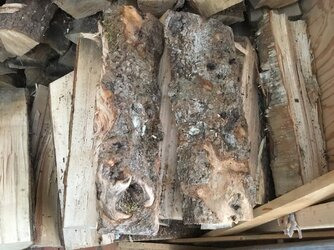Do you realize you come across as a colossal a-hole when you say things like this? I'm assuming you're an adult given how long you say you've been burning but you certainly aren't acting like one.
The fact that you you made the effort to go back through my posting history so you could make a comment like this is beyond embarrassing and you do things like this regularly. I don't understand how you expect people to take you seriously when this is your behavior in response to a simple challenge to your opinion.
Also, please prove all the times my wood ID chops appear to be terrible. I don't claim to always be right about anything but I would love to see all the times I'm so far off you feel it's ok to make fun of me in public.
Please grow up and stick to discussion the topics not attacking forum members.
Whoa, back up the truck, podner! 😯
True, I've seldom been described as being "mature."
😏
Here's what you said in your post #12:
"Come on man...lol. You can eyeball the different between 25.7 and 24 million BTU per cord? More power to you.
Either list is fine with me, the point is still the same: beech and oak have about the same BTU value."
Now, most of your list I agree with, it's identical to mine except for the BTU of White Oak, which I've burned a lot of. Then you questioned my claim to be able to tell a difference between wood that are separated by 2M/cord BTU. So naturally I want to know how much experience you have in drying/burning various woods.
I certainly didn't "go back through your posting history," I simply went to your first post in May 2020 where you said " Hi Folks, I'm a brand spanking new wood burner," Then I happened to see a post by you just last month, wondering whether Black Locust was Hickory or Ash. 🤔
I thought to myself "OK, 'nuff said, not much experience. "
I did
not say "your wood ID skills were terrible," as you seem to think I said, merely that they "don't appear to be all that great." You are no CincyBurner, my friend. 😏
I'm not going to go research more of your wood ID posts, I've already wasted enough time today that could have been better spent getting more dry wood for my SILs. 😆 I
did get a dead tree down, at least. 🤗
I'm sorry you saw my response as an attack. I have nothing against you, and in fact have "liked" several of your posts.
If you're going to challenge a statement I make, I have no problem with that, but you're going to have to back it up with
something, not just say "More power to you."


